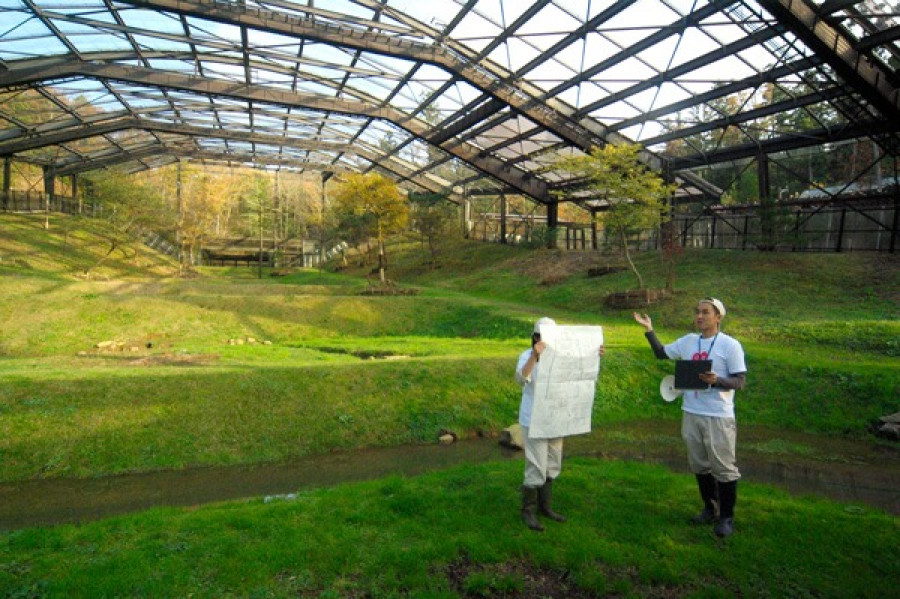The Sado Ibis Conservation Centre (Ibis Forest Park), where visitors can see the captive ibis. Many people have been here before.
A short distance from this conservation centre is the Sado Ibis Conservation Centre Wild Return Station. This is a facility for releasing the ibis kept at the conservation centre into the natural world on Sado Island. Here, the birds are trained to survive in the natural environment and released here.
There is a huge 'acclimatisation gauge' that reproduces an environment similar to the actual satoyama on Sado Island, but these facilities are not open to the public. Visitors can only see the exterior of the acclimatisation gauge and other facilities from the observation building a short distance away, but for one day a year, this rehabilitation station is open to the public.
In 2015, the event took place on 21 November. This is a rare opportunity, as it is only open to the public at this time of year when training is not taking place on the acclimatisation gauge. And yet it is free to attend! So I attended the event.
 Management
Management
Enter through the front gate, which is normally closed, and after a short walk you will see the log cabin-style building, the Administration Building.
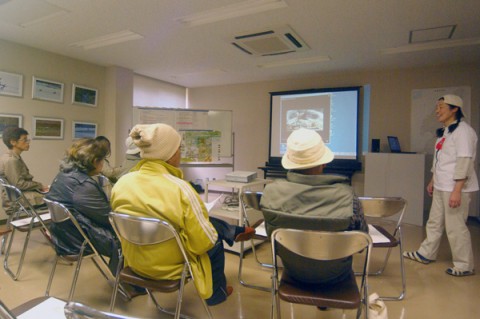 First, you will learn about ibis reintroduction efforts in the wild through a video.
First, you will learn about ibis reintroduction efforts in the wild through a video.
Although a little earlier than scheduled, more than 10 participants had already gathered. While watching a video summarising past efforts to artificially breed and release the crested ibis, we wait for the participants to gather.
 The latest status of the crested ibis was explained and,
The latest status of the crested ibis was explained and,
The public opening has finally begun. At a glance, about 30 people attended. There were people from families with small children to those who came all the way from the Kansai region to visit the island on this day. After watching a video about the crested ibis again, an official from the Ministry of the Environment explained the latest status of the release and reintroduction of the ibis into the wild.
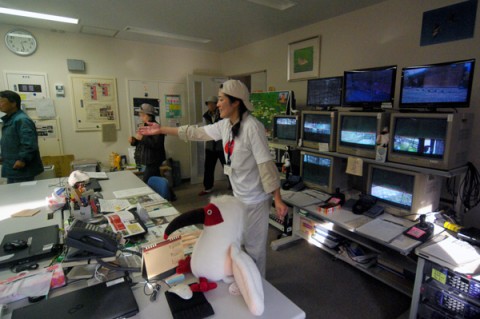 The management office has an array of monitors.
The management office has an array of monitors.
Enter the administrative office, the central part of the rehabilitation station you have been waiting for! The room is lined with numerous monitors. The crested ibis is a very nervous bird, so even the slightest noise can startle it, causing it to fly and make a lot of noise. So they usually operate the cameras remotely to keep an eye on the crested ibis in their cages.
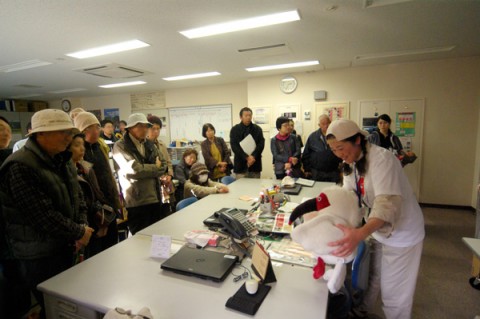 The keepers will answer any questions you have.
The keepers will answer any questions you have.
Then, the keepers will explain various things about the crested ibis. Participants can ask any questions they want.
An interesting question was "Do ibises float in water?" question. Cranes and swans often float on the water, but ibis can't. Their legs are not that long, so they don't like to be in deep water. But they like to eat loaches, crabs and crabs in the water, so they look for food in the rice paddies.
Yes, the ibis is a bird that lives in close proximity to humans.
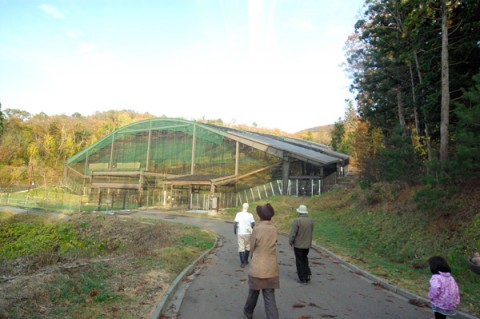 Finally, the acclimatisation cage.
Finally, the acclimatisation cage.
And finally, the main event,! A visit to the acclimatisation cages. There are breeding cages around the road leading from the administration building to the acclimatisation cages, where the crested ibis are kept. The tour is conducted in a way to avoid startling the crested ibis, and to avoid talking too loudly.
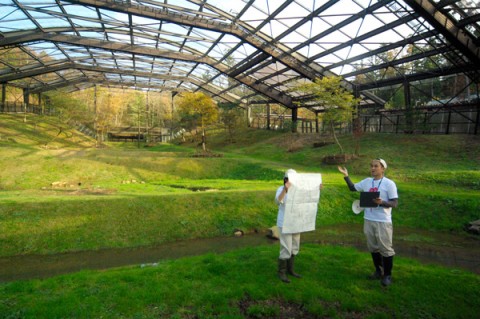 Inside the acclimatisation cage
Inside the acclimatisation cage
Inside a huge cage, 15 metres high and 80 metres deep, the village of Sado is recreated, with ponds, perch trees and even rice paddies planted with rice.
Released ibis are trained here for about three months to be able to survive in their natural environment.
Training is not just about feeding and flying. To get used to the outside environment, they also drive a light truck in this cage. At first, they drive the truck slowly and slowly, but even so, the crested ibis are startled and run away when they see a moving vehicle they have never seen before. They gradually get them used to it.
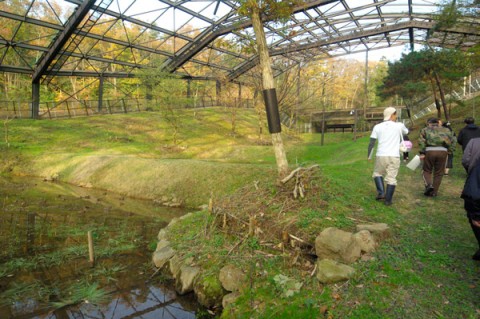 Further in.
Further in.
The deeper you go in the cage, the higher you go. Normally, the keepers have a rule not to enter the back of the cage during training, but today they climbed up to the back of the cage.
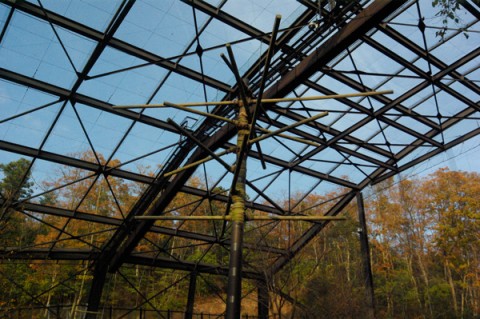 Note the perch and the netting on the ceiling.
Note the perch and the netting on the ceiling.
The highest perch in the cage. The crested ibis usually roost on this perch. It is said that they feel safer when they are as high above the ground as possible.
If you look closely at the ceiling, can you see the netting? The netting is designed to act as a cushion in the event of a flying ibis hitting the ceiling.
Other features include a weak electric current on the outside of the cage. This is to prevent animals and other predators that try to prey on the crested ibis from entering from the outside.
They have been working on it a little bit more with repeated acclimatisation training.
 Horse feed and other ibis feed.
Horse feed and other ibis feed.
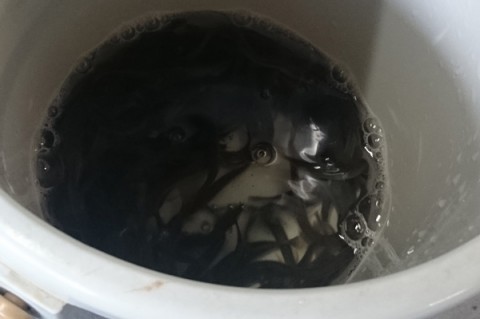 Live loach. This is also food for crested ibis
Live loach. This is also food for crested ibis
After the tour of the acclimatisation cages, we returned to the administration building. Various exhibits are on display on the floor below the management office and meeting room mentioned earlier.
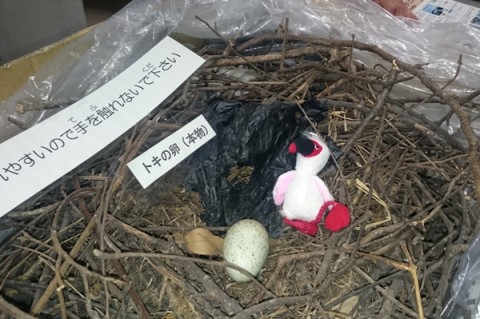 Nests actually built by crested ibis
Nests actually built by crested ibis
This is an actual nest made by an ibis. The black thing in the middle is a piece of plastic return track. They also use this kind of material for their nests. The chicks are not real, but the eggs are real (unfertilised).
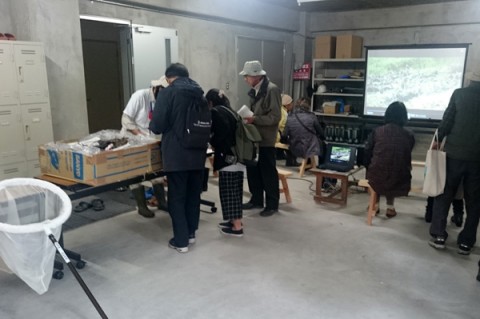 Various other exhibits.
Various other exhibits.
Thus ended this year's Open House at the Reintroduction to the Wild Station.
In fact, the day after this (22 November 2015), a symposium on the return of the crested ibis to the wild was held at Aiport Sado in Ryotsu.
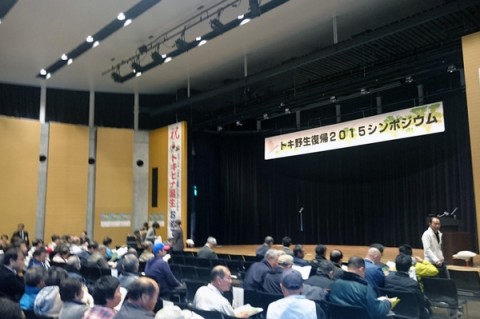 Symposium on the reintroduction of the crested ibis to the wild
Symposium on the reintroduction of the crested ibis to the wild
The Environmental Restoration Vision, formulated in 2003, set a target of 'establishing 60 birds in the eastern part of Kosado (later changed to the whole of Sado) around 2015'. 'Established' refers to individuals that have lived and bred continuously for more than one year. At present, 117 crested ibis have been released in the whole of Sado Island (treated as alive). This means that the target has almost been achieved, and the next target was set at '220 crested ibis to be established on Sado Island in five years'.
In order to establish and increase the number of crested ibis in the natural environment, it is necessary to create and maintain an environment where loaches and Spanish crabs, which are food for the ibis, can live. To achieve this, an environment that can be inhabited by insects and water plants that serve as food for loaches and Spanish crabs is necessary. In other words, in order to return the crested ibis to the wild, it is essential to restore and maintain not only the ibis but also the environment of nature and the satoyama as a whole.
We invite everyone to come and see the efforts being made on Sado Island, including efforts to reintroduce the crested ibis to the wild and to rehabilitate the environment.
The public opening of the Reintroduction Station is announced on the Sado City website and the website of the Sado Ibis Conservation Centre around October each year, as in previous years. (Advance application is required, but if there is room on the day, people can attend without an application).
Sado Ibis Conservation Centre Reintroduction Station
*On non-open days, the exterior of the acclimatisation cage can be viewed from the observation building on site.
- 377-4, Niibo Nagaune, Sado, Niigata 952-0101, Japan
- http://tokihogocenter.ec-net.jp/
advertisement


